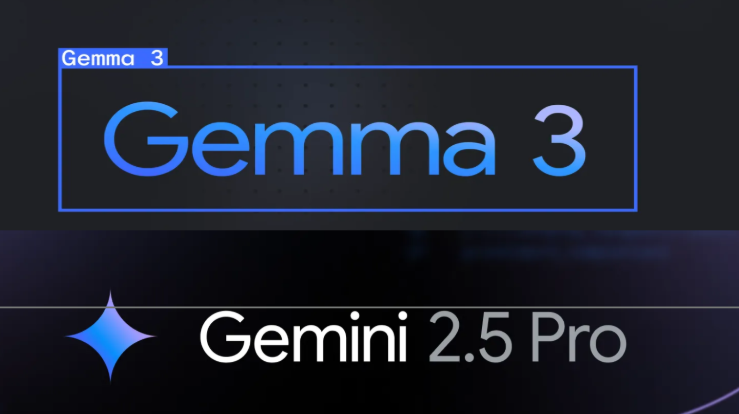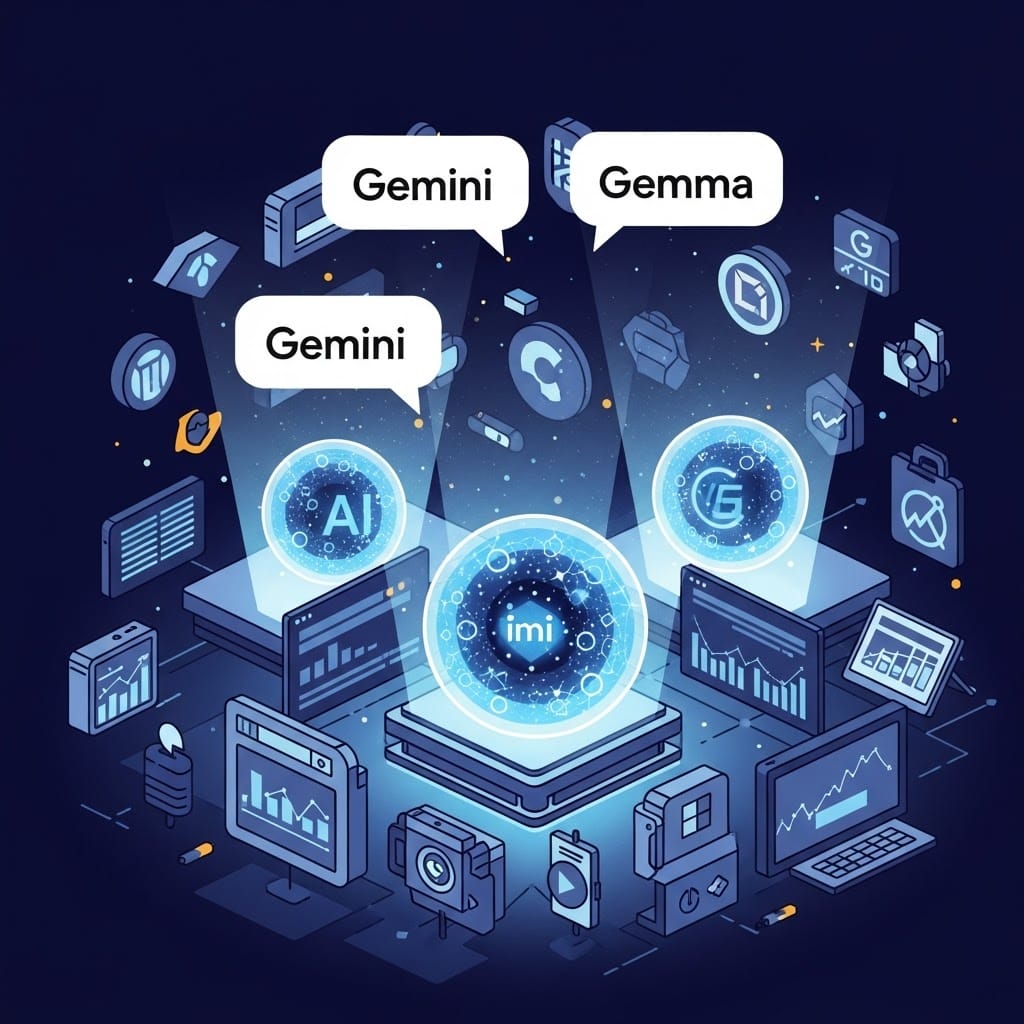Elevate Your MarTech AI Arsenal with Google's Gemini & Gemma Models

AI has rapidly evolved from a supplemental tool to a foundational pillar within the MarTech landscape. The ability to process vast datasets, automate complex tasks, and derive deep insights positions AI as a non-negotiable element for competitive marketing strategies. Google offers two distinct yet powerful Generative AI model families, Gemini and Gemma, each engineered with specific architectures and deployment paradigms that can profoundly influence and enhance your marketing operations.
Understanding the Core Differences: Gemini vs. Gemma
While both Gemini and Gemma represent the vanguard of Google's AI research, their design philosophies and intended applications diverge significantly, catering to a spectrum of MarTech needs.
💖 Gemini: The Cloud-Native Multimodal Powerhouse
Google's Gemini is its flagship, proprietary, and cloud-native AI model family, representing the pinnacle of its large language model (LLM) development. Being proprietary, access is typically facilitated through Google Cloud's managed services and APIs, ensuring high availability, robust infrastructure, and ongoing support directly from Google. Its cloud-native nature means it's designed to leverage the immense computational resources of Google's global data centers, enabling unparalleled scalability and the ability to handle colossal workloads without requiring users to manage underlying infrastructure.
The defining characteristic of Gemini is its genuinely multimodal capability. Unlike models restricted to a single data type, Gemini can effortlessly understand, reason across, and generate content in a unified manner across diverse modalities:
- Text: Processing and generating human-like language for ad copy, email campaigns, SEO content, chatbots, and more.
- Code: Assisting in script generation for automation, developing custom MarTech tools, or analyzing codebases for marketing analytics platforms.
- Images: Interpreting visual content in ads, generating new images for campaigns, or understanding user preferences based on visual engagement.
- Audio: Analyzing voice data from customer interactions, generating voiceovers for video ads, or understanding sentiment from spoken feedback.
- Video: Comprehending the narrative, objects, actions, and emotions within video content for creative optimization, content analysis, or targeted ad placement.

This inherent multimodality empowers Gemini for complex reasoning and strategic problem-solving. Its architecture, built upon advanced transformer networks and trained on a vast and diverse dataset, allows it to identify subtle correlations and patterns across different data types. This makes it ideal for handling massive, diverse datasets at scale, performing sophisticated analyses that underpin overarching strategic analysis and fuel intricate, large-scale applications within MarTech.
🔥 Gemma: The Lightweight, Open-Source, and Customizable Family
Gemma represents a family of lightweight, open-source models that are directly derived from the same cutting-edge research and technology that powers Gemini. The open-source nature is a significant differentiator, providing developers and organizations with unprecedented transparency, flexibility, and control. Users can download the model weights, inspect their architecture, and even modify the models to suit highly specialized requirements. This fosters a vibrant community around Gemma, contributing to its development and application.
Gemma's strength lies in its efficiency and deep customizability through fine-tuning. Being "lightweight" means these models have fewer parameters than their larger counterparts like Gemini, leading to:
- Lower computational requirements: Reduced processing power, memory, and energy consumption, making them more economical to run.
- Faster inference: Quicker response times for real-time applications.
- Smaller footprint: Easier deployment in environments with limited resources.

The capability for deep customizability through fine-tuning is paramount. Developers can take a pre-trained Gemma model and further train it on their specific, proprietary datasets. This process adapts the model's weights to understand and generate content precisely aligned with a brand's unique voice, specific product jargon, or niche industry terminology, leading to highly specialized and accurate outputs. This enables flexible deployment in local, on-device, or edge environments, which translates to:
- Enhanced data privacy and security: Sensitive data can remain within an organization's own infrastructure, reducing the need to send it to external cloud services.
- Reduced latency: Processing occurs closer to the data source, enabling near real-time responses.
- Offline capabilities: Models can function without continuous internet connectivity.
- Cost predictability: Running models on owned hardware often leads to more predictable operational costs compared to usage-based cloud API billing.
Primarily focused on text and code, Gemma gives developers unparalleled control to adapt the model precisely to specific, high-volume, or specialized tasks, making it a powerful tool for targeted automation and content generation where domain specificity and efficiency are critical.

Translating Strengths into Powerful MarTech Applications
These distinct strengths directly translate into powerful, yet different, applications within the MarTech ecosystem.
- Gemma's Core Use Case: Hyper-Specific, On-Brand Content Generation at Scale
- Imagine a global e-commerce brand like a fashion retailer or an electronics giant that needs to generate tens of thousands of unique product descriptions daily across numerous markets and languages. Each description is not merely informative; it must strictly adhere to a complex brand voice (e.g., playful, authoritative, technical), incorporate specific SEO keywords for discoverability, and comply with varying regional regulations (e.g., consumer protection laws, product disclaimers).
- A Gemma model is perfectly suited here due to its fine-tuning capabilities and operational efficiency. The brand's data science or marketing operations team can extensively fine-tune a Gemma model on their vast repository of existing product data, meticulously detailed style guides, and comprehensive SEO keyword lists. This involves training the model on examples of successful, on-brand descriptions, ensuring it internalizes the nuances of the brand's tone, preferred vocabulary, and keyword integration strategies.
- Once fine-tuned, this customized Gemma model can be deployed and run efficiently on the brand's internal servers or private cloud infrastructure. This setup allows it to consistently produce high-quality, on-brand descriptions at a massive scale, crucially without incurring continuous cloud API costs for each generation, making it a cost-effective solution for high-volume content creation.
- The fine-tuned model ensures consistency and adherence to guidelines that a general-purpose model might struggle with without extensive prompt engineering for every single request.
- Gemini's Core Use Case: Multimodal Ad Creative Optimization & Predictive Audience Segmentation
- Consider a large automotive manufacturer aiming to maximize the return on investment (ROI) of its ad creatives across diverse digital channels, including social media, display networks, and streaming platforms. This involves a multifaceted challenge: understanding which visual elements, video segments, and messaging styles resonate most with distinct audience segments, and subsequently predicting optimal ad variations for future campaigns.
- Gemini, with its robust multimodal capabilities and advanced reasoning, is the unrivaled choice for this scenario. It can ingest and analyze vast, complex datasets of past ad performance, which crucially includes not just text but also:
- Images: Analyzing visual compositions, color palettes, product placements, and emotional cues conveyed through imagery.
- Video Content: Deconstructing video ads frame by frame, analyzing pacing, sound design, actor expressions, and key narrative moments.
- Ad Copy: Understanding the textual messaging, calls-to-action, and persuasive language.
- Engagement Metrics: Correlating the above multimodal inputs with performance data such as click-through rates (CTR), conversion rates, view-through rates, and audience demographics.
Gemini's advanced architecture allows it to identify subtle patterns that are invisible to human analysts or unimodal AI models. For instance, it can correlate specific visual elements in a video (e.g., a car driving through a scenic landscape) with particular audio cues (e.g., a specific type of background music) and text sentiment in the ad copy, and then link these combinations to higher engagement from a specific demographic segment. It can discern which emotional resonance (e.g., excitement, luxury, reliability) is effectively communicated by different creative elements and how that impacts user response.
Based on these sophisticated analyses, Gemini can then predict optimal combinations of visual, textual, and video elements for new ad creatives. Beyond just analysis, its generative capabilities mean it can provide strategic recommendations for new ad creatives, suggest modifications to existing ones, or even generate novel creative concepts that align with predicted high-performing patterns. This empowers the manufacturer to achieve maximum impact, optimizing ad spend by targeting specific audience segments with highly resonant and effective creative variations.

A Comprehensive MarTech AI Toolkit
Ultimately, the most powerful MarTech AI toolkit is not about choosing one model over the other, but rather understanding how to strategically combine the power of both Gemini and Gemma models.
Gemma can handle the high-volume, highly specialized, and cost-efficient content generation tasks, ensuring brand consistency and rapid deployment for specific marketing assets.
Gemini can provide the overarching strategic intelligence, multimodal analytics, and complex reasoning required for optimizing campaigns, understanding deep audience insights, and driving innovation at a macro level.
By integrating both, organizations can achieve an unparalleled level of AI capability within their MarTech stack, leading to more personalized customer experiences, more efficient operations, and ultimately, superior marketing outcomes.
